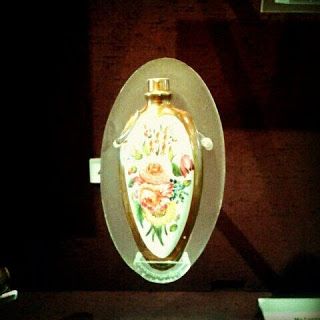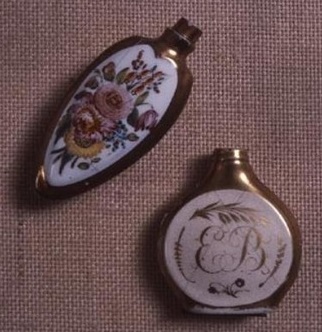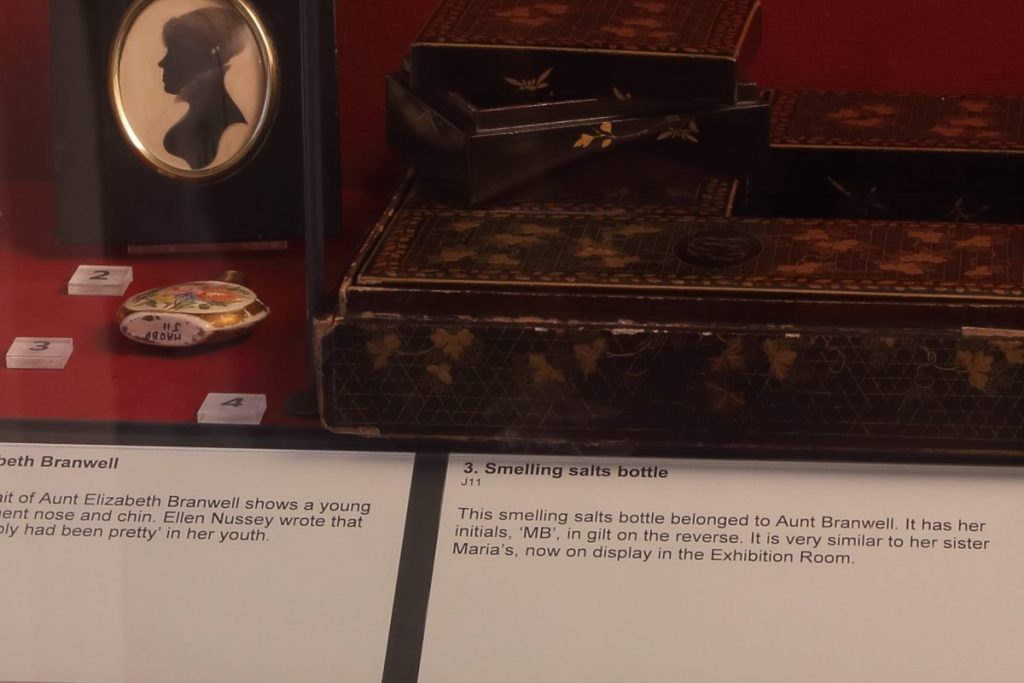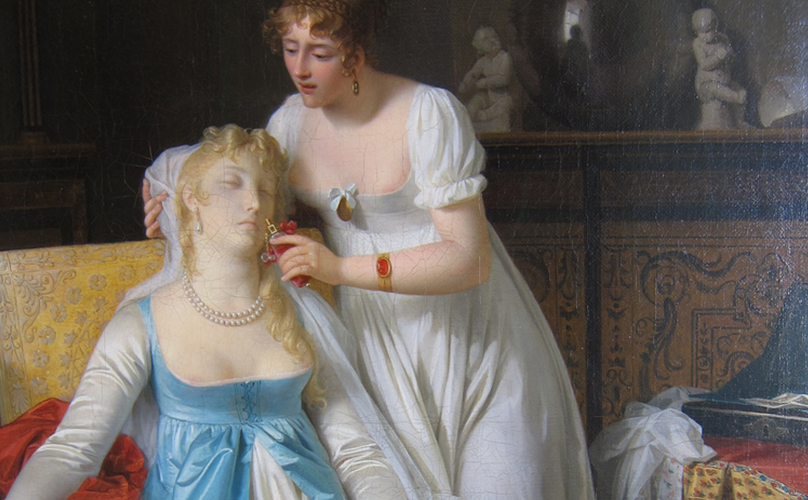Anne Brontë was just 18 months old when her mother Maria died after a prolonged and painful illness, so of course she would have had no memories of her mother from Cornwall. Another Cornish woman, Maria’s sister Elizabeth Branwell, took her place in the parsonage and in Anne’s life, becoming in effect a surrogate mother to her.
Anne and her Aunt Branwell shared a room throughout her childhood and they became very close to each other, but one of the things Anne must have loved most of all was tales of her mother. This natural longing for a woman she had never really known was the reason why one of Anne’s treasured possessions was a tiny yet beautiful object that had belonged to her mother: her smelling salts bottle.

Smelling salts were commonly kept by fashionable women throughout the late eighteenth century and throughout the nineteenth century, and their primary purpose was to revive fainting women. For this reason they were even carried by police constables in Victorian times as an essential first aid item. The smelling salts themselves were made up of ammonium carbonate and water, so that when the bottle was unstoppered ammonia was released. Wafting this ammonia under the nose of a fainted or fainting women would cause her to breathe rapidly, which introduces more oxygen into the system and revives the poor unfortunate.
Why they should have become such an essential item is a little bit of a mystery. Tight corsetry could certainly encourage fainting, but the truly impractical corsets didn’t become de rigueur until after Anne Brontë’s death, and clothing was much looser fitting during the Georgian period when Maria Branwell acquired her salts bottle. It is very lucky that Maria had the bottle at all that later became Anne’s possession, as it is one of her few items from Cornwall that made it to Yorkshire in one piece.
Maria Branwell first travelled from Penzance to Woodhouse Grove School near Leeds in 1812, to work for her Aunt Jane and Uncle John Fennell who had recently founded the school. This was an auspicious move as it was there that Maria met an Irish clergyman who had been hired as a classics examiner: he was, of course, Patrick Brontë, and by the end of the year they were married.

Shortly after arriving in Yorkshire, Maria contacted her eldest sister Elizabeth in Penzance and asked her to arrange for her belongings to be sent on to her. They were accordingly packed into a large crate and loaded onto a ship, but the ship didn’t get far, as Maria revealed in a letter to her then suitor Patrick:
‘I mentioned having sent for my books, clothes, etc. On Saturday evening about the time you were writing the description of your imaginary shipwreck, I was reading and feeling the effects of a real one, having then received a letter from my sister giving me an account of the vessel in which she had sent my box being stranded upon the coast of Devonshire, in consequence of which the box was dashed to pieces with the violence of the sea, and all my little property, with the exception of a very few articles, being swallowed up by the mighty deep.’
The smelling salts bottle was one of these few articles saved from the mighty deep, and it is an exquisite and beautiful item. Small and tear shaped it is made of white porcelain with a floral pattern on the front; on the reverse in gold gilt are her initials M.B. We know that it was something Maria brought from Cornwall, rather than purchased in Yorkshire, as it is very similar to another smelling salts bottle that belonged to Elizabeth Branwell, and which has E.B. in gilt decoration on its reverse.
This is a clue as to the smelling salts bottles. They were not used to revive a fainting Maria or Elizabeth, they were instead an item of beauty to be seen with, and an indication of the exalted place within Penzance society that the Branwell family occupied. The bottles the sisters had are far more ornate than most bottles of this period, and it seems likely that their younger sister Charlotte would have had a similar bottle of her own.

When it came into Anne’s possession it may have been filled with perfume, which she could then dab onto the monogrammed handkerchief that she liked to carry. Both Maria and Elizabeth’s smelling salts bottles can be seen at the Brontë Parsonage Museum today, but whilst we can delight in looking upon them we will never feel the thrill that Anne did whenever she drew it out: here after all was a connection to the two women she loved most, her aunt who was always there for her, and her mother who would only ever be in her dreams.

thank you for the very interesting information I was also born in Thornton and I am very interested in the brontes I live accross the road from were p bronte was minester at the old bell church Thornton
Thanks Kath!I love the Old Bell Chapel at Thornton.